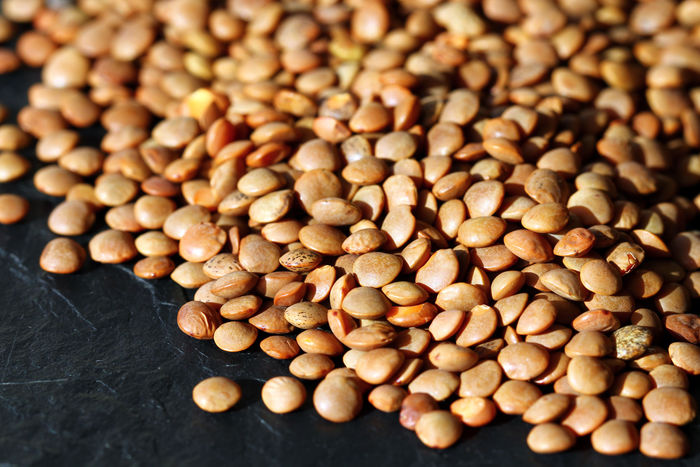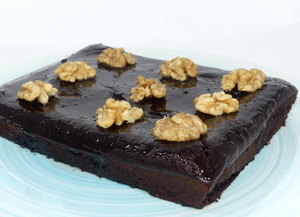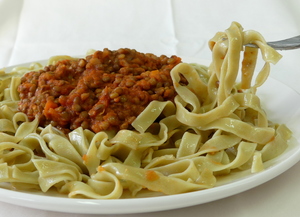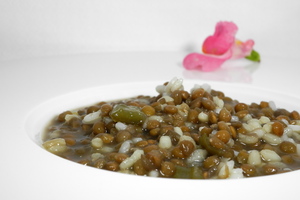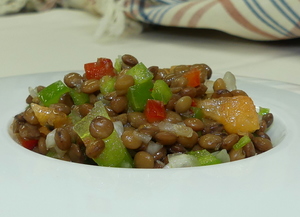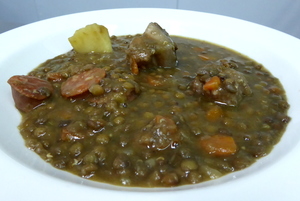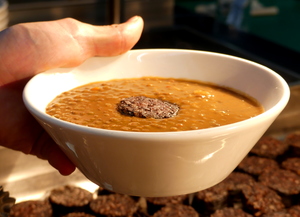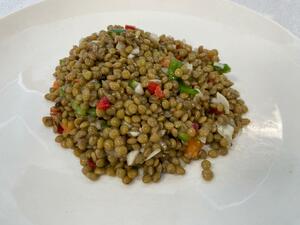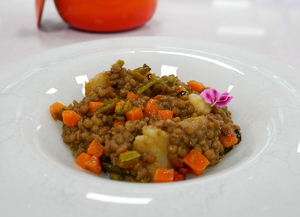Lentils
This legume is native from the South-West of Asia, and it spread quickly to the Mediterranean countries. Nowadays it is a widespread plant in all warm regions, as it’s easy to harvest, it’s good for the nutrient restoration of the soil and it´s rich in energy, cheap, easy to preserve and it goes well with all kinds of food. The main farming grounds are Turkey and India.
Two types are planted for human consumption; one of them produces small brown seeds (3-6 mm of diameter) and the other one yellow bigger seeds (6-9 mm of diameter), although there are more types of lentils depending on the seed colour. The most common are the green lentils (Dupuyensis), small in size and green or yellowish green with black spots; the queen lentils, where we can distinguish the Castillian blonde and the Armuña blonde lentils (Vulgaris); the yellow lentils, from Asian origin; orange lentils, which are a basic food in the Middle East; brown lentils (Variabilis), originating from India, red lentils, with a very smooth taste and great for purees and greenish blue kentils, which grow on volcanic soils. In Spain we can find castillian blonde, and Armuña lentils, and brown and green lentils.
Lentils are a food that has a high nutritional value. Carbohydrates are the most abundant nutrients and they are mainly made up from starch. Their vegetal proteins, although in good amounts, are incomplete, as they lack methionine, an essential aminoacid. But, if lentils are combined with cereals such as rice, a methionine rich food, they become high biological value proteins, up to a point where they can be combined to those proteins of animal origin. The fat content is very low. The fiber content although high, is still lower than other legumes. It’s rich in vitamins B1, B3 and B6. It has a lot of zinc and selenium, and iron above all, although it’s absorbed worse than that from animal products. Selenium is an antioxidant mineral that protects human cells from the oxidation of the free radicals.
-
Type of dish
- Beers
- Cocktails
- Breakfasts and brunch
- Burguers
- Juices, milkshakes and beverages
- Shellfish
- Bread and pastries
- Pizzas, patty
- Dessert
- Pasta
- Sándwich
- Pastries
- Finger foods
- Ice creams and sorbets
- Legumes
- Salads
- Eggs
- Patty
- liqueur
- Harvard plate
- Main course
- Meats
- Fish
- Birds
- Vegetables
- Soups and creams
- Rices
- Coffee, chocolate and infusion
- Cheeses
- Appetizers and canapes
- Temperature
- Cuisine type
- Additional culinary preparation
- Conservation technique
- Seasonal recipes
-
- Aromatic herbs
- Beverages
- Big game hunt
- Bread and pastries
- Canned goods and pickles
- Cereals
- Condiments, spices and additives
- Cooked, salted, preserved and cold meats
- Dried fruits and nuts
- Dry pulses
- Edible oils and vinegars
- Eggs and derivatives
- Feathered game hunt
- Fish cuts
- Fishes
- Insects
- Kitchen and bakery tecniques
- Kitchen and bakery utensils
- Meat cuts
- Meats
- Milk, cream and derivatives
- Mushrooms
- Offal
- Pasta, rice, flour and derivatives
- Poultry
- Seafood
- Service techniques
- Service utensils
- Vegetables cuts
- Vegetables, fruits, tubers and seaweed

